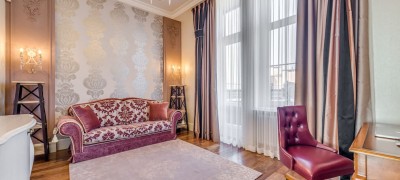Overview of the double-row ceiling cornice
The cornice is an indispensable element of finishing the window opening if you plan to decorate it with a curtain or curtain. To fix two types of fabrics (curtain-tulle), two-row models are used. Ceiling cornices are very popular among them.
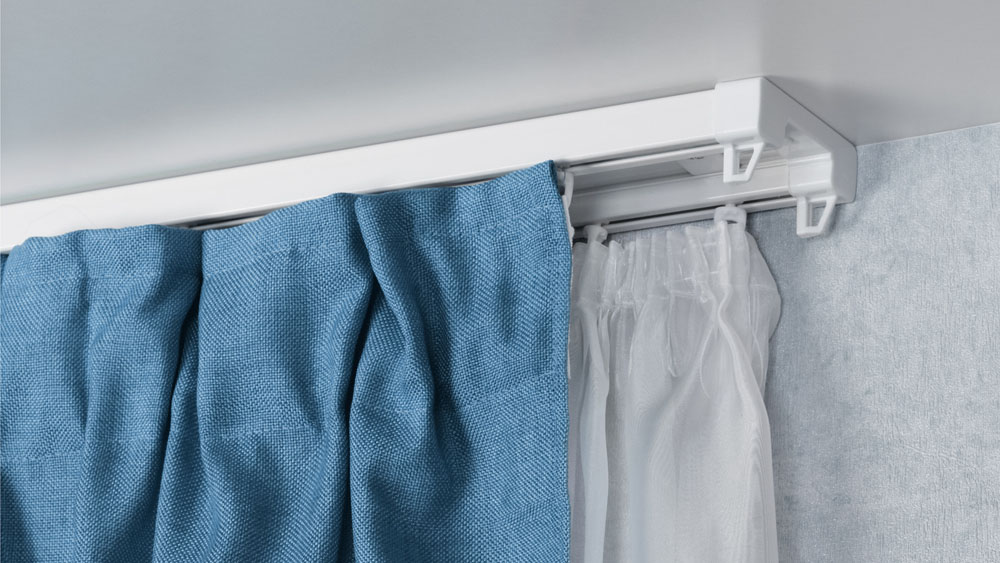
Note! The use of ceiling curtain rods is especially justified in small rooms, since in combination with long curtains to the floor, they contribute to the visual expansion of the space.
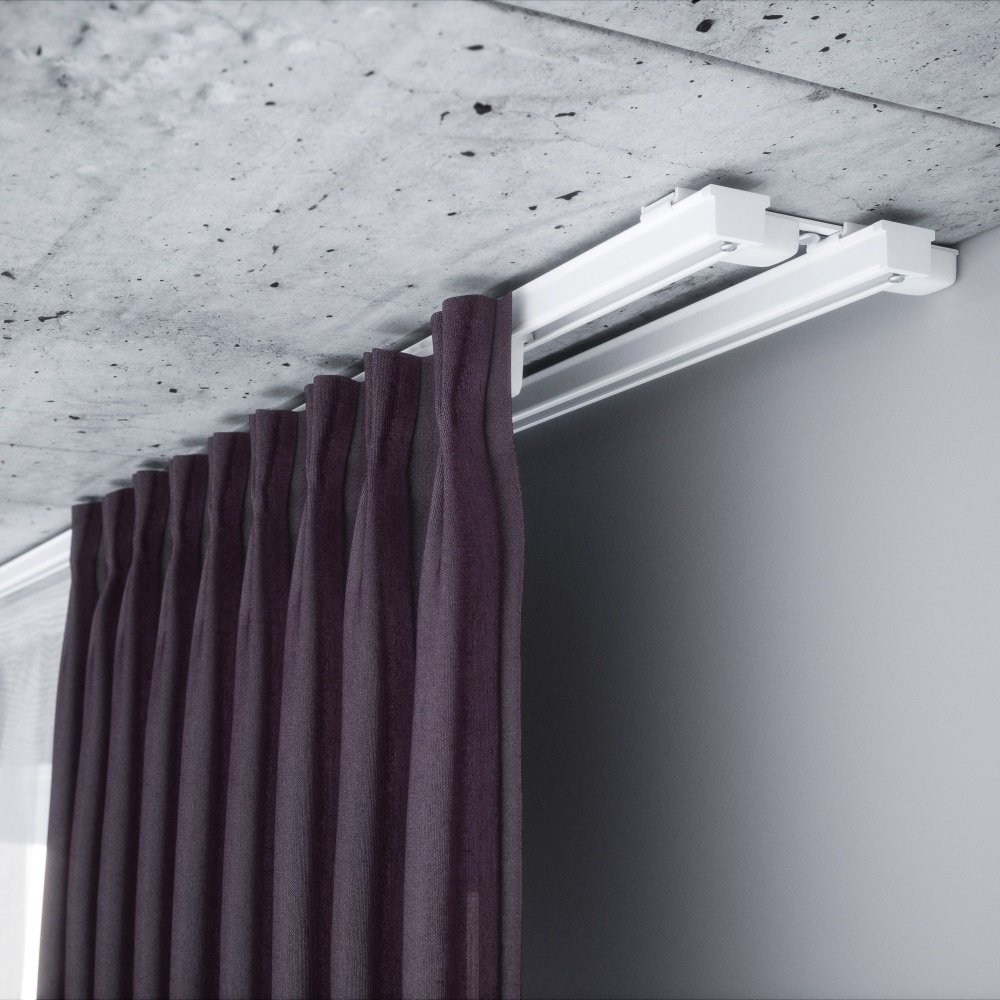
Description and varieties of ceiling cornices
Ceiling cornices got their name from the place of attachment and today they are a serious competitor to their counterparts attached to the wall. They may differ in appearance, design features and material. But, despite all the differences, ceiling cornices combine two key factors - reliability and ease of use. Most often they are made of metal or plastic.

Design features
By design features, ceiling cornices can be divided into:
- plastic profile rail (bus) - fit as closely as possible to the ceiling, the curtains are attached to the hooks, which "easily and naturally" move along the guide slots;
- aluminum profile - are distinguished by their durability and higher cost;
- single-row, double-row, multi-row - used for the simultaneous fastening of a different number of canvases;
- curtain rods - structurally do not differ from wall models (guide pipes with decorative elements and several brackets for fastening);
- baguette - classic curtain rods, finished with a decorative strip;
- straight and curved - allow you to drape areas of various shapes;
- strings - traditionally used to fix light curtains.
Despite the peculiarities of manufacturing, the length of the cornice should be 30-40 cm longer than the width of the window, which will completely cover the window opening. The width and height of the structure are also very important parameters.
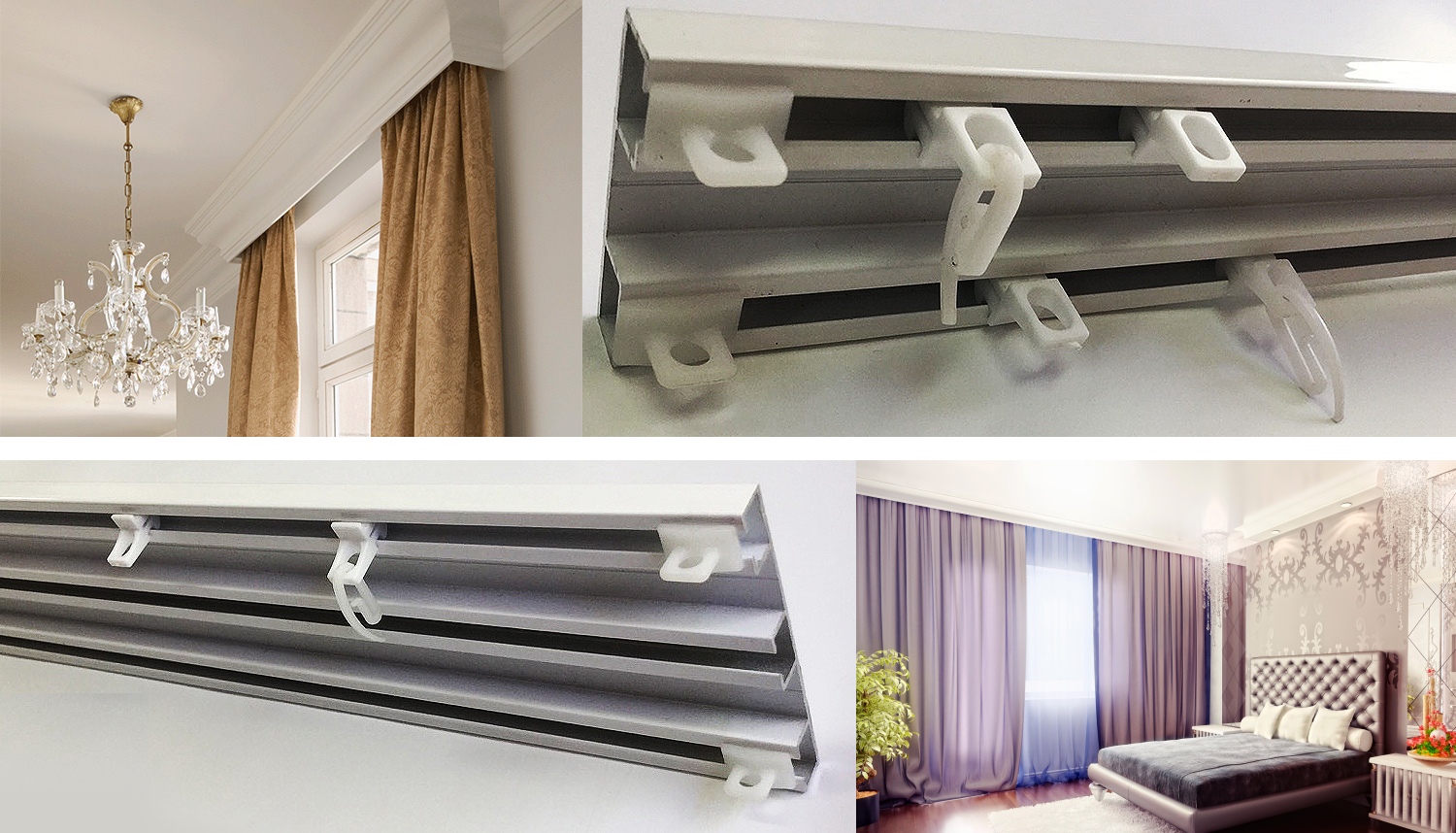
Note! Ceiling cornices allow you to place the curtain at a considerable distance from the wall without compromising the reliability of the fastening. This favorably positions them in comparison with wall models if the room has very wide window sills or massive radiators.
Width
For ceiling curtain rods for curtains, the width dimensions directly depend on their design features. For example, in profile plastic models, depending on the number of rows (1-2-3), the width is 37-58-95 mm.

Height
For various models, the height of the cornice can also vary significantly - from 13 mm for profile plastic structures to 50 mm for baguette cornices.This parameter is especially in demand when using stretch ceilings in interior design. The minimum size of profile cornices makes them real "invisible" and a very popular element of window decoration.

Advantages and disadvantages
When choosing a two-row ceiling cornice for curtains of any size, you should pay attention to its strengths and weaknesses. The advantages of such cornices are:
- the possibility of using it in rooms where the upper cut of the window is as close as possible to the ceiling and there is simply no free space left for fixing the wall cornice;
- the ability to mount at any distance from the wall, which allows you to hide wide window sills;
- use in combination with a stretch ceiling.
The main concerns about ceiling curtain rods, especially plastic ones, are related to their durability. Critics believe that heavy curtains can deform over time. Although, the real facts of exploitation testify to the opposite.

How to choose the right one
It is quite simple to decide how to choose a cornice, the dimensions and colors of which will ideally fit into the interior of the room. Ideally, the appearance of the ceiling cornice should not be discordant with the rest of the interior elements, so light colors, discreet against the background of the ceiling, will organically combine with any style.

It is much more important to choose the curtain rod depending on the expected weight of the curtain - its design and fasteners must be guaranteed to ensure the safety of users. Ceiling models in this regard are much preferable to wall ones.

Double-row curtain rods are the most demanded on the market. Even if it was originally planned to drape the window with only a thick curtain, it is possible that in the summer you will want to add a light tulle to it and a two-row model will be the best, by the way, since you will not have to buy and install a new cornice.
Note! Plastic ceiling profile cornices are currently the best option for a combination of price and quality.
How to hang a double-row curtain rod
To fix a two-row cornice on the ceiling, it is absolutely not necessary to call a master. All work can be done by hand. From tools and consumables you will need:
- hammer drill or hammer drill;
- drills or drills for concrete;
- dowels and screws;
- tape measure and pencil;
- hacksaw for metal.
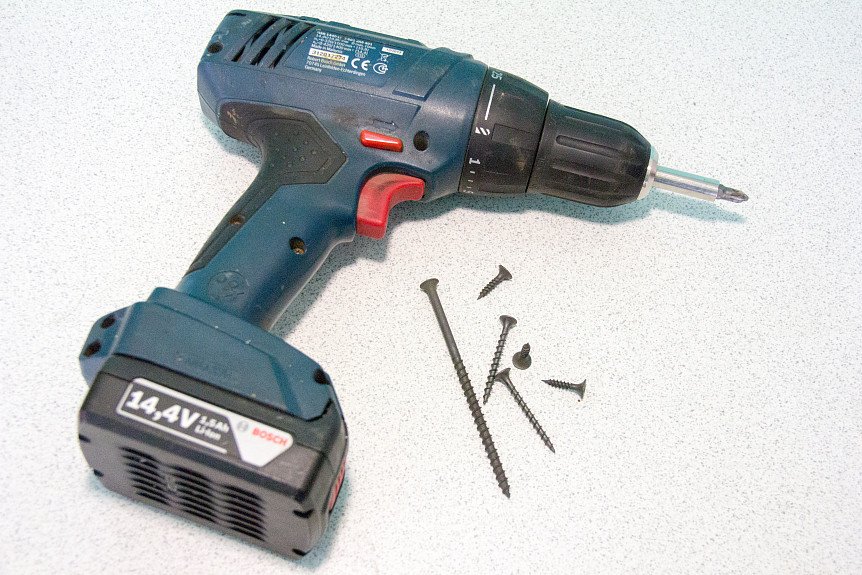
Pruning
In the overwhelming majority of cases, the ceiling cornice will have to be cut based on the size of a particular window opening. The easiest way to do this is to use a classic metal hacksaw. Its use will allow you to make the most even cut with a minimum of burrs.
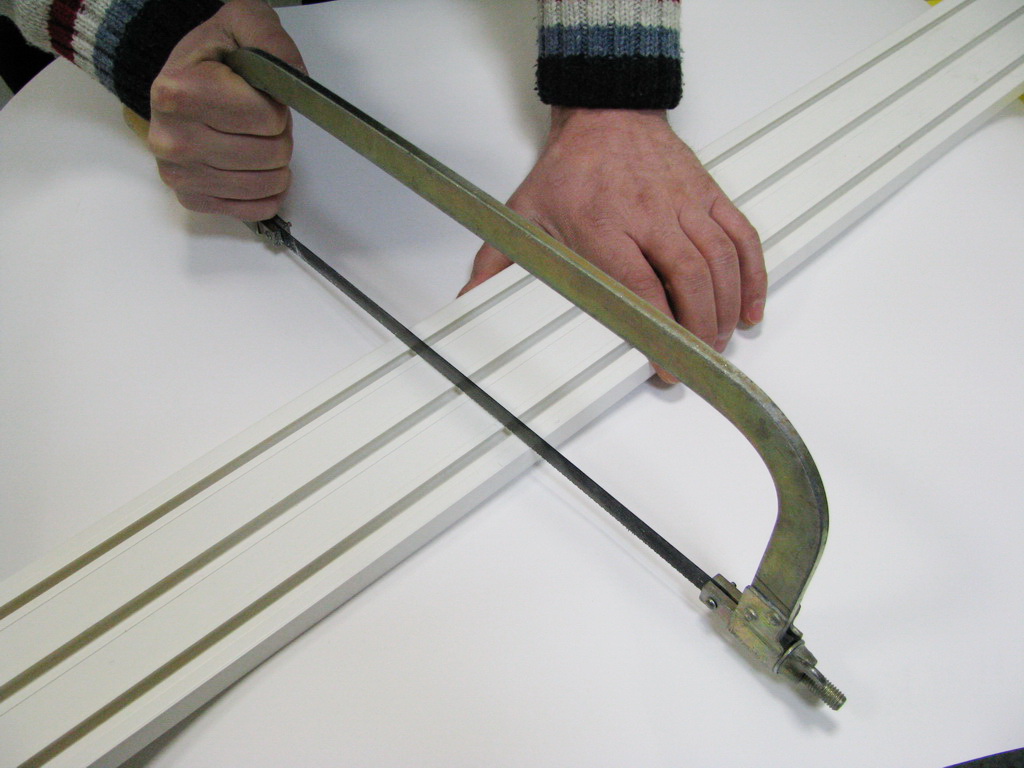
Fastening
Fastening the cornice is necessarily preceded by a marking operation. After all the fixing points of the structure have been determined, you can proceed to the installation work. If we are talking about a reinforced concrete ceiling, then first you have to drill (drill) holes for plastic dowels and only then fix the cornice with self-tapping screws.

When attaching the cornice to the plasterboard ceiling, you should purchase special butterfly dowels, which ensure reliable fixation of any structure.
What is the difference between one-, two- and three-row designs
A three-row cornice is useful when you plan to use tulle, curtain and lambrequin to decorate the window at the same time. Such a composition, on the one hand, requires a very balanced attitude to the choice of the color and texture of the fabric, on the other, a very critical approach to the selection of fasteners, since we are talking about a serious increase in the load on the cornice.

Video: installation of a ceiling curtain rod















